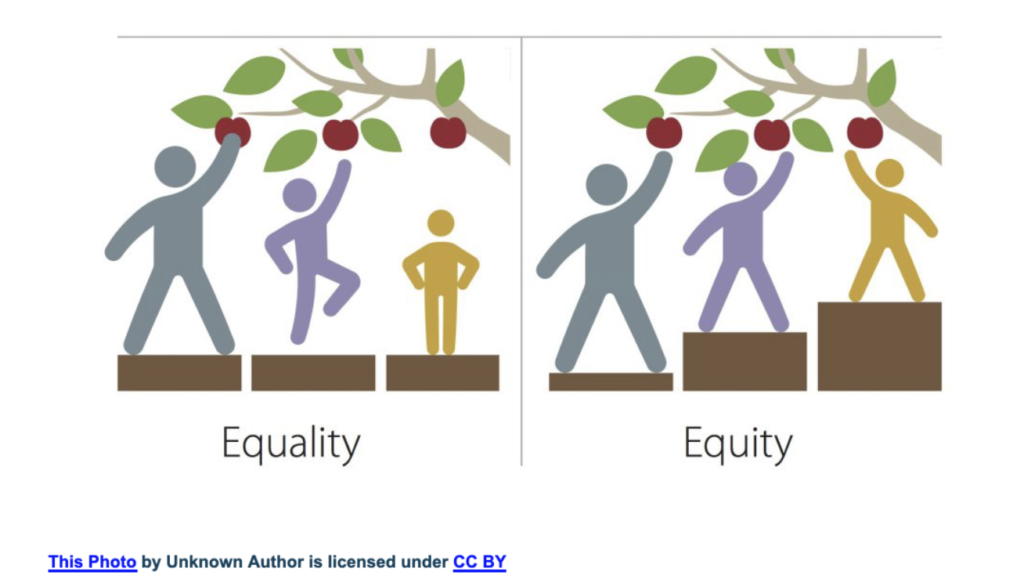Blog
International Women’s Day 2022: 4 Ways to Create Equity in The Workplace
March 04, 2022
International Women’s Day 2022 is March 8th and important discussions are taking place at classroom desks, boardroom tables, and at kitchen tables across the country about how to create more diverse, inclusive, and equitable workplaces.
This year’s theme is #BreakTheBias, and focuses on raising awareness against bias and taking action for equality and equity for all.
But what does this mean in practice? Gender equality and gender equity are related terms, but they have different meanings.
What is equality?
Equality is giving everyone the same resources and opportunities, but doesn’t always take into consideration the fact that groups and individuals might be dealing with different circumstances that prevent the allocation of those resources and opportunities from being equal.
What is equity?
Equity, on the other hand, recognized that everyone comes from different circumstances. Instead of making resources equally available, equitable practices allocate the exact resources and opportunities needed to reach a place of equality.
According to the World Health Organization (WHO), equity is defined as “the absence of avoidable or remediable differences among groups of people, whether those groups are defined socially, economically, demographically or geographically.”
A great way to explain this is through the illustrations below — in this example, equal support through equally distributed tools (the ladder) still leaves one person with unequal access to the fruit the tree is growing.
The equitable solution allocates the exact resources that each person needs to pick the fruit.

The difference between equity and equality
Understanding the difference between equity and equality is important because knowing the difference shapes how we build policies and support systems to ensure everyone can achieve their full potential.
We can’t achieve equality without first implementing equity, which means that organizations need to take action-oriented steps towards diversity, equity, and inclusion (DEI).
Diversity in the workplace is a familiar concept for many progessive organizations, but events like International Women’s Day have spotlighted the social exclusions faced by women, LGBTQ+, and people from marginalized communities.
How to show equity in the workplace?
Equity can be hard to demonstrate in the workplace because what constitutes “fair” treatment is often subjective to the unique experiences of each employee.
With this in mind, leaders need to make a point to openly recognize this factor and work to create a safe and supportive environment that allows for open discussion and understanding.
How to implement equity in the workplace
Equity is about creating a “level” playing field that gives every employee the resources they need to succeed. Here are a few examples to help you get started:
Prioritize wage equity
Fair compensation is essential to building an equal workplace, and while discussions about wages have been a “taboo” subject in the past, this has allowed wage disparities to continue into the present day.
To address this, aim for transparency around wages and openly discuss correlations between employee performance, position, and rate in order to ensure that everyone is being paid fairly and according to their qualifications and skills.
Empower diverse employees
Many companies will hire for diversity, but then fail when it comes to providing the resources and support to help those diverse hires advance and achieve their potential.
When this happens we tend to see high diversity in low-paying and low-authority roles, but a homogeneous over-representation of a single group in leadership and management.
If this has happened in your organization you can start course corrections by empowering diverse employees and giving equitable promotions and opportunities, and ensuring that there is diverse representation at the executive level.
4 examples of equity in the workplace
Below are five ways you can empower women and diverse groups within your organization and foster an equitable working environment:
- Reevaluate your equity practices. It’s ok to have made errors in judgment or to have unintentionally held up a problematic status quo — your goal should be to recognize, assess, and update your equity practices as new information is revealed.
- Make job descriptions accessible. Make the wage range transparent for different positions and provide a variety of ways that an applicant can apply for that job, including offline application opportunities.
- Focus on skill-based hiring. Many people don’t have access to higher education but have developed the skills needed to perform a particular role in other ways. Instead of focusing on a specific degree in your hiring process, emphasize skills and previous work experience instead.
- Empower your employees. Even companies with all the best resources in place might fall short of helping employees feel like they can access them. Work to create a space where employees know about the resources, how to access them, and feel safe and comfortable doing so.
Start creating an equitable workplace today
Equity is how we meet the needs of women, diverse, and under-represented groups and how we build a future that helps everyone achieve their potential.
A great way to get started is to sign up for our self-paced diversity, equity, and inclusion (DEI) program, which looks at the relationship between emotional intelligence and DEI principles, and provides 10 exercises to help individuals and groups enhance emotional functioning and to commit to building diverse, equal, and inclusive workplaces.
